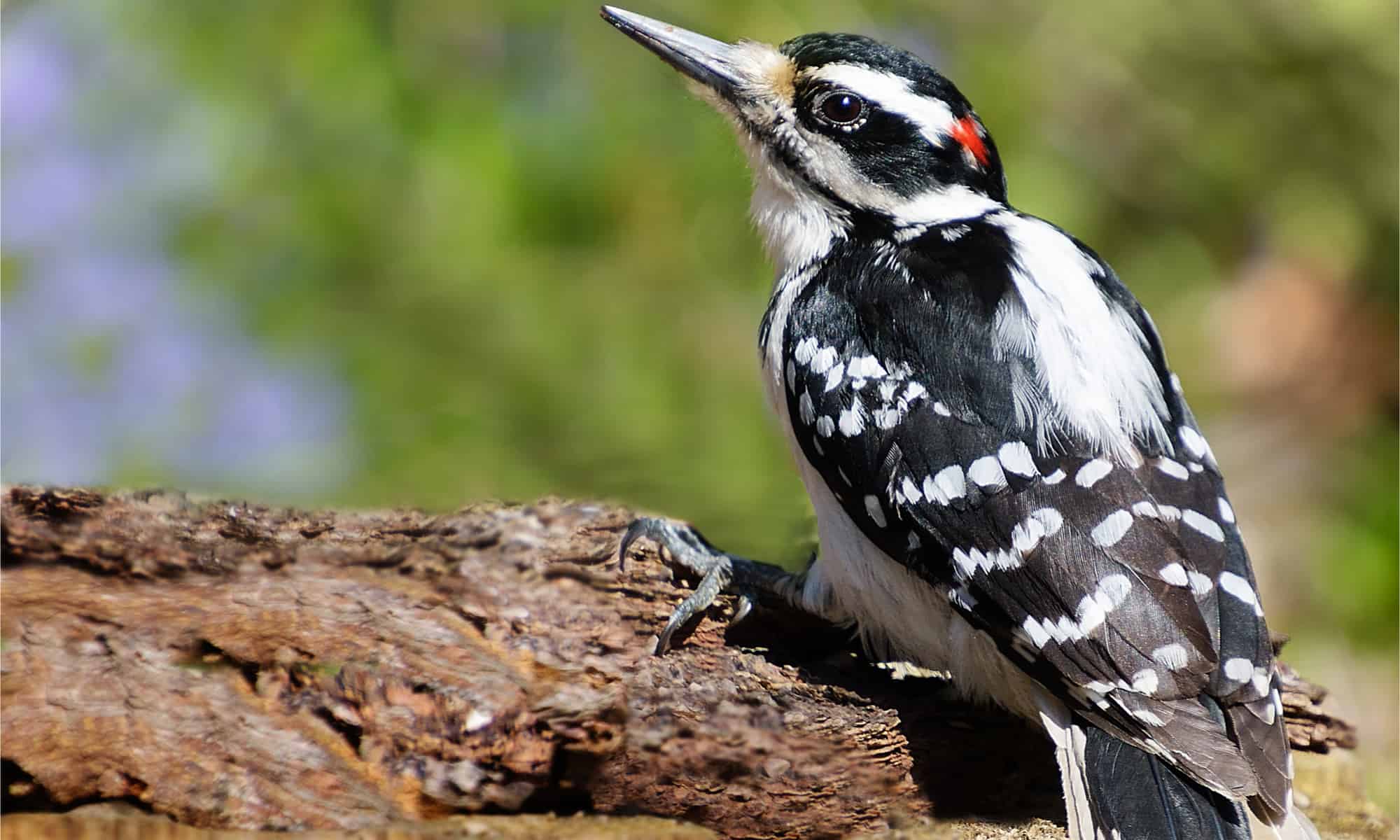

Unlike the hairy woodpecker, which has a softer call, the hairy woodpecker makes a sharp, captivating peek! Sound similar to that of a squeaky chew toy. Most people have heard the downy woodpecker’s calls, which are short and pleasant picks punctuated by a high-pitched, declining whinny. (By comparison, the downy woodpecker measures around six and a half inches in length.) Their size difference is only noticeable when they are side by side, which is rare. In comparison to its downy relative, the hairy woodpecker is significantly bigger, measuring around nine inches from the tip of its beak to the end of its tail. He also consumes berries, seeds, and nuts. It preys on various insects, including wood-boring beetle larvae, ladybugs, wasps, moths, and other species. The Hairy Woodpecker, on the other hand, mostly consumes insects. Hairy woodpeckers prefer densely wooded regions with huge trees as their preferred habitat.ĭowny Woodpeckers are suet eaters, although they also eat millet, almonds, and chunky nuts in addition to suet and nuts. This bird’s beak is far longer and stronger than that of other woodpeckers, and it is almost as long as the bird’s head.Īside from sharing some of the same natural environments, downy woodpeckers are much more likely to be spotted in suburban areas, and small parks than hairy woodpeckers are. The downy has a short, stubby beak that is just slightly longer than the space between the front of its head and the corner of its eye. Downy woodpeckers are more common than hairy woodpeckers.Įxamining the structure of their bills is a more reliable technique of determining the size disparities between them. Also, eats berries, seeds, and nuts.The average lifespan is four years (wild)The average lifespan is 12 years (wild)Many are permanent residents however northernmost populations may migrate south in winter.Do not migrateHave 3-8 eggs in on the clutchHave 3-6 eggs in on the clutchĭifferences between Downy Woodpecker vs Hairy Woodpeckerĭowny woodpeckers have several black lines or spots on their whitish tail feathers, but the outer tail feathers of hairy woodpeckers are normally plain and unmarked.

Feeds on wood-boring beetle larvae, ladybugs, wasps, moths, and other insects. They may appear white from above.In much of the Eastern U.S., Hairy Woodpecker has totally white outer tail feathers.Do not make flock usually lives aloneSome time make a flock of 2-3 birds but prefer to live aloneThey like suet feeders and enjoy millet, almonds, and chunky nuts.Eat mostly bugs.

These black bars are best seen from below. View the overview below to see how the Downy Woodpecker and the Hairy Woodpecker differ from one another.ĭowny WoodpeckerHairy WoodpeckerDowny Woodpecker makes the whinnying call which lasts for about 2 sec.In comparison to the Downy Woodpecker’s call, the Hairy Woodpecker’s sound is petite, sharper, and more powerful.9.8 to 12.2 inch wingspan15 inch wingspanSomewhat rounded wingsCompletely rounded wingsDowny woodpeckers are indigenous to deciduous forests in North America.The Hairy Woodpecker may be found from the coast to the highlands in North America and Central America’s mountain forests.A small black-and-white woodpeckerA large black-and-white woodpeckerThe average size is 6.5 inchesThe average size is 9.5 inchesThe Downy Woodpecker’s whitish outer tail plumes are commonly speckled with black. They can be a challenge to inexperienced or unskilled observers when it comes to identification. They are two of the most prevalent woodpecker species that may be found in the United States. One participant even marked different lengths on his peanut feeder.In North America, the Downy and Hairy woodpeckers may be found in abundance. Some participants have measured their feeders to help them judge size. Size is a reliable field mark, but it can be difficult to judge in the field. Furthermore, although Downys never have completely white outer tail feathers underneath, some Hairy Woodpeckers have the barring, so seeing bars does not necessarily mean you have a Downy. Sometimes black barring shows on the outer side of these feathers, but not always, and it can be difficult to see the underside of the feathers. If you can see the under side of the outer tail feathers, and they are completely white, then you can be certain that you have a Hairy Woodpecker. Look for black on the outer tail feathers.The photos above show the difference in this marking between the two species. This can be difficult to see in the field but can help confirm an identification if you can see it. Try to see if a some black extends from the neck/shoulder into the upper breast of the bird.If the bill looks small, much smaller than the width of the head, the bird is a Downy. Check the heaviness and length of the bill compared to the head.


 0 kommentar(er)
0 kommentar(er)
